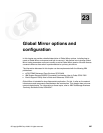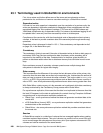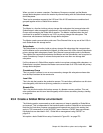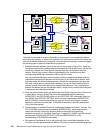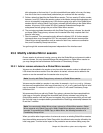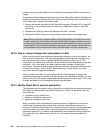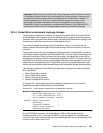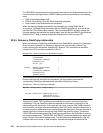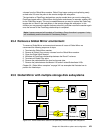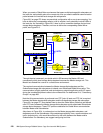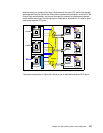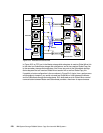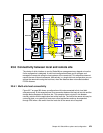
272 IBM System Storage DS6000 Series: Copy Services with IBM System z
volumes, you may consider adding the new volumes to an existing Global Mirror session in
stages.
Suspending a Global Copy pair that belongs to an active Global Mirror session will impact the
formation of Consistency Groups. When you intend to remove Global Copy volumes from an
active Global Mirror session, follow these steps:
1. Remove the desired volumes from the Global Mirror session; Example 23-2 on page 274
shows how to remove Global Copy volumes from a Global Mirror session, using TSO
commands.
2. Withdraw the FlashCopy relationship between the B and C volumes.
3. Terminate the Global Copy pair to bring volume A and volume B into simplex mode.
23.3.2 Add or remove storage disk subsystems or LSSs
When you plan to add a new Subordinate storage disk subsystem to an active session, you
have to stop the session first. Then add the new Subordinate storage disk subsystem and
start the session again (with the updated RSESSION command, when you use TSO
commands). The session start command will then contain the new Subordinate storage disk
subsystem. This is valid also for any other interface used to manage a Global Mirror
environment. The same procedure applies when you remove a storage disk subsystem from
a Global Mirror session, which can be a Subordinate only—in other words, you cannot
remove the Master storage disk subsystem.
When you add a new LSS to an active session and this LSS belongs to a storage disk
subsystem that already has another LSS that belongs to this Global Mirror session, you may
add the new LSS to the session without stopping and starting the session again. This is true
for either the Master or for a Subordinate storage disk subsystem.
23.3.3 Modify Global Mirror session parameters
The parameters that are used for tuning a Global Mirror session may be modified by pausing
the session and then resuming the session with the new values. The parameters that you
may modify are:
Consistency Group interval time
Maximum coordination interval time
Maximum Consistency drain time
When you issue a start command after a pause command, as opposed to a resume, any
value for the Consistency Group interval time, maximum coordination interval time, or
maximum Consistency Group drain time in the start command is ignored. If these parameters
have to be altered, you have to give a resume command to the paused session with the
parameters specified. If you resume a paused session without specifying these parameters,
they will be set to their default values; see 22.4.2, “Consistency Group parameters” on
page 262.
Note: When you remove A volumes without pausing Global Mirror, you might see an error
condition saying that the Consistency Group formation failed. However, this does not mean
you have lost a consistent copy at the remote site because Global Mirror does not take the
FlashCopy (B to C) for the failed Consistency Group data. This message indicates that just
one Consistency Group formation has failed, and Global Mirror will retry the sequence.






